- What is Glaucoma
- Who are at risk for Glaucoma?
- How is Glaucoma diagnosed?
- What are the different types of glaucoma?
- How is Glaucoma treated?
- What is important to remember?
- Can something be done if glaucoma is advanced and detected late?
What is a glaucoma?
Glaucoma is a serious eye condition where there is progressive destruction of the optic nerve leading to deterioration in vision. This can lead to irreversible blindness.
It is a leading cause of irreversible blindness and is second only to cataracts as the most common cause of blindness overall. Worldwide, glaucoma affects more than 70 million people, about 10% of whom are estimated to be blind.
In this condition, an increase in pressure within the eye is usually the culprit. This pressure buildup is the result of the abnormal drainage of fluid, called aqueous, within the eye. As a result, the blood vessels that nourish the optic nerve are squeezed, effectively reducing the supply of oxygen and nutrients to this vital tissue. The increased pressure likewise causes mechanical damage to the structures that comprise the optic nerve. All these contribute to the development of visual loss.

In patients with glaucoma, peripheral vision --- the top, side and bottom areas of vision --- are usually affected and lost first. Early in the disease, this loss in vision often goes unnoticed. Then, as the glaucomatous damage worsens, this "tunnel vision" becomes narrower and narrower.


Who are at risk for Glaucoma?
Although glaucoma can occur in people of all ages,it is more common in people who are over 50 years old. About 1% to 2% of cases occur in infants, in whom it is called congenital glaucoma. The recognized risk factors for the disease include: history of glaucoma affecting other family members, diabetes, high errors of refraction, history of prolonged steroid use, eye trauma, cataract, severe eye inflammation, infection, and previous complicated eye surgery. Certain ocular anatomic configurations and other systemic afflictions can also predispose one to glaucoma.
How is Glaucoma diagnosed?
The diagnosis of glaucoma requires meticulous history-taking and clinical examination by an ophthalmologist/glaucoma specialist.
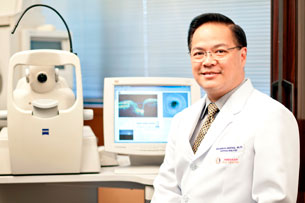
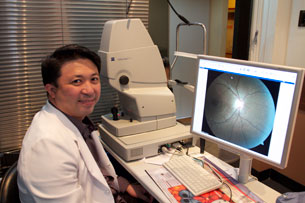
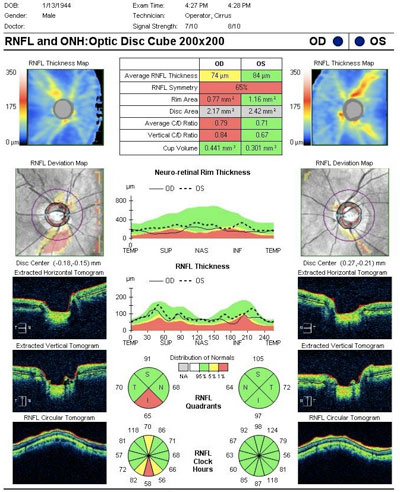
Specialized instruments are used to evaluate intraocular pressure (tonometry), corneal thickness (pachymetry), the drainage system in the eye (gonioscopy), and the color, shape and contour of the optic nerve (ophthalmoscopy). Of equal importance too is the evaluation of the scope of the visual field (perimetry) and the objective assessment and documentation of the optic nerve (digital color photography and optical coherence tomography). All these have to be performed to ensure an accurate diagnosis of glaucoma.
What are the different types of glaucoma?
Glaucoma can be divided into 2 major types: a) Open-angle type b) Angle-closure type
The difference lies in the mechanism by which eye pressure elevation is produced and location where there is abnormality in the drainage of fluid within the eye. In open-angle glaucoma, the entrance to the eye's drainage system is as wide and as open as it should be. The clogging problem occurs inside the drainage canals, like the clogging that can occur inside the pipe below the drain in a sink. In angle-closure glaucoma, the pressure rises because the entrance to the drainage canals are blocked or covered over, very much like the blockage that would occur if a piece of plastic completely covered the drain.
People who have open-angle glaucoma generally feel fine and suffer no early warning signs and symptoms. This makes this type of glaucoma, in a manner of speaking, treacherous. The intraocular pressure slowly rises and it causes gradual loss of patches of vision that are not noticeable until they enlarge and coalesce.
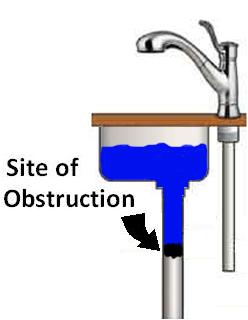
Angle-closure glaucoma is different. Here, eye pressure goes up very quickly. The symptoms of acute angle-closure glaucoma are severe eye pain and redness, headache, nausea, and blurred vision which demand immediate medical attention because abrupt rises in intraocular pressure can lead to serious, immediate and permanent visual damage.
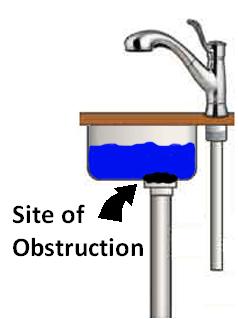
Knowledge of which type of glaucoma is present in a patient is essential in deciding the appropriate treatment.
How is Glaucoma treated?
The goal of treatment is to preserve vision by slowing down the progression of the disease process. This would generally involve the lowering of intraocular pressure and the adoption of therapeutic strategies to protect the optic nerve from further damage.
Treatment should be appropriate to the type and severity of the glaucoma that is present in a patient. One or a combination of topical medications can be used to lower intraocular pressure. Laser therapy is used, when appropriate, to improve fluid drainage within the eye.
In instances where there is progression or worsening of the glaucomatous condition, despite maximum usage of medications and laser therapy, surgery is done. This would involve the surgical creation of new drainage systems in the eye to relieve pressure buildup. Intolerance to medications and inability to sustain medical treatment are also indications for surgery.
At this time, generally speaking, glaucoma cannot be cured, but it can be controlled. With the availability of new drugs, lasers and new surgical technology, we are now better able to control this disease.
What is important to remember?
The key to successful glaucoma management is EARLY DETECTION, APPROPRIATE AND ADEQUATE TREATMENT, and REGULAR MONITORING of the disease.
The American Eye Center is fully equipped with the most advanced facilities and latest technology to diagnose, treat and monitor patients with all types of glaucoma.
Can something be done if glaucoma is advanced and detected late?
Yes. Vision rehabilitation can help you cope with changes in your vision so that you can continue to lead an independent and active life. Know more.



